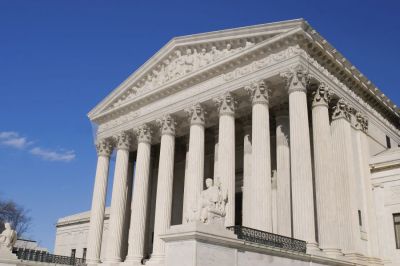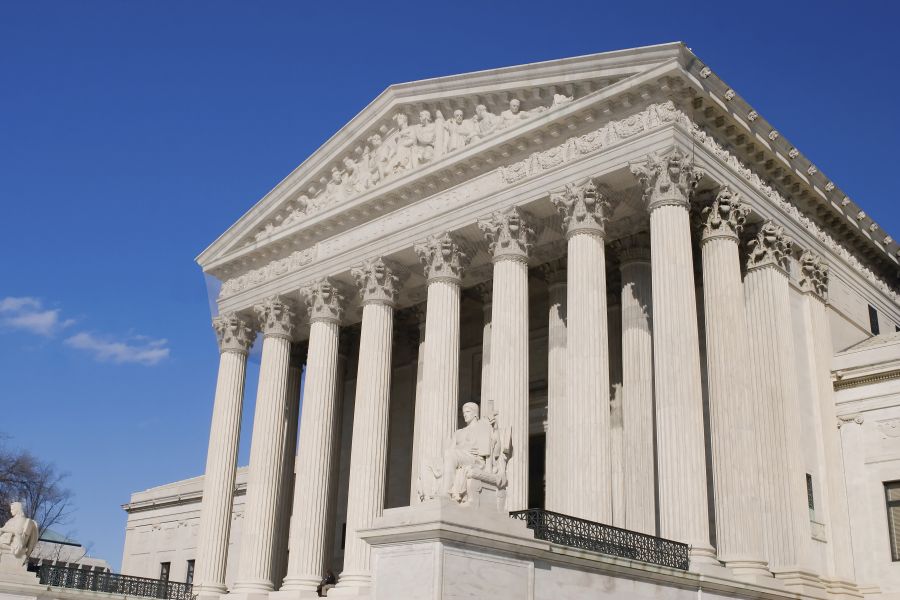PERSPECTIVES: Court OKs coach’s on-field prayer, shifting balance for religious expression
First Five by the Freedom Forum Institute
Jul 21, 2022

Download Word doc here.
In its decision in Kennedy v. Bremerton, the Supreme Court strengthened First Amendment protection for religious speech by government officials.
THE CASE
Public high school football coach Joseph Kennedy filed a lawsuit alleging his rights to free speech and freedom of religion were violated when he was fired for praying at the 50-yard line after each game.
The Bremerton School District in Washington state argued that:
(1) As a government employee at work, Kennedy was engaged in “government speech,” which is afforded no protection under the First Amendment.
(2) His prayer made it appear that the school district was officially endorsing a particular religion.
THE RULING
The school district’s “government speech” justification was somewhat of a Hail Mary pass that few believed would succeed, and the court quickly sacked. Kennedy’s prayers did not occur within the “ordinary scope” of his job duties. Once the game had ended, the court said Kennedy “was not seeking to convey a government-created message. He was not instructing players, discussing strategy, encouraging better on-field performance or engaged in any other speech the district paid him to produce as a coach.”
The court next approached the second argument. It quickly found that Kennedy’s prayer was sincere and held that the school district disciplined him as a result.
This shifted the burden onto the government to justify its policy against prayer as necessary and narrow. It argued the suspension was necessary because a “reasonable observer” would believe the school district was endorsing religion — and violating the First Amendment’s establishment clause — by allowing Kennedy to pray at midfield after games. The court disagreed. In this case, there was no fear of an establishment of religion just because “Mr. Kennedy’s proposal to pray quietly by himself on the field would have meant some people would have seen his religious exercise.” Justice Neil Gorsuch said there was nothing in the record indicating students felt coerced to pray. In fact, “learning how to tolerate speech or prayer of all kinds is ‘part of learning how to live in a pluralistic society,’ a trait of character essential to ‘a tolerant citizenry.’”
Gorsuch feared that the district’s protection of religious liberty was suppression that would be replicated in other ways: “Not only could schools fire teachers for praying quietly over their lunch, for wearing a yarmulke to school or for offering a midday prayer during a break before practice. Under the district’s rule, a school would be required to do so.”
EXPERT PERSPECTIVES
UNBALANCING PROTECTION FOR RELIGIOUS EXERCISE AND PROHIBITION ON GOVERNMENT ESTABLISHING RELIGION
Less than a week after its decision in Carson v. Makin, a case about funding for religious schools, the court again gave priority to the First Amendment’s free exercise clause’s protection for an individual’s religious practice over the establishment clause’s restriction against government endorsement of religion. With the same 6-3 lineup of justices on each side, the court said “the First Amendment doubly protects religious speech” through the rights of freedom of speech and freedom of religion. The decision in Kennedy v. Bremerton, combined with the earlier decision in Carson v. Makin, firmly rebalances the establishment clause and the exercise clause.
What’s different, in other words, is that the court came down twice in favor of “me” practicing my faith versus avoiding the appearance or intentional display of government endorsement.
This may not simply be a rebalancing of the prior understanding of the establishment clause versus exercise clause equation, it may be an unbalancing. The result is an ever-shrinking separation between church and state. As Justice Sonia Sotomayor said in a dissenting opinion, “[t]he Court now charts a different path, yet again paying almost exclusive attention to the free exercise clause’s protection for individual religious exercise while giving short shrift to the establishment clause’s prohibition on state establishment of religion.”
— Kevin Goldberg, Freedom Forum First Amendment specialist
A VICTORY FOR PERSONAL EXPRESSION
The Supreme Court’s decision in Kennedy v. Bremerton School District represents a significant victory for freedom of speech.
A key issue in the case was whether Kennedy engaged in protected personal expression or unprotected government expression. The distinction is important, because under a case known as Garcetti v. Ceballos (2006), if a public employee is engaged in official, job-duty speech, that employee is engaged in government speech and has no First Amendment rights.
Writing for the majority, Justice Neil Gorsuch explained: “[Kennedy] did not speak to government policy. He was not seeking to convey a government-created message. He was not instructing prayers, discussing strategy, encouraging better on-field performance, or engaged in any other speech the District paid him to produce as speech. Simply put: Kennedy’s prayers did not owe their existence to Mr. Kennedy’s responsibilities as a public employee.”
The court got it right on this fundamental free-speech question. As I wrote in a previous commentary, Joseph Kennedy was engaged in private speech, not government speech, when he prayed on the football field.
The government speech doctrine is dangerous and can lead to the evisceration of much personal expression for government employees.
As Justice Alito said, “If private speech could be passed off as government speech by simply affixing a government seal of approval, government could silence or muffle the expression of disfavored viewpoints.”
Fortunately, the Supreme Court understood this and limited application of the doctrine.
— David L. Hudson, Jr., Freedom Forum fellow
CONCERNING NEW QUESTIONS FOR PUBLIC SCHOOLS
The decision will make it much more difficult for school officials to know where to draw the line on religious expression by teachers and administrators during the contract day. I have worked for 30 years to create a broad consensus, left to right, on how to handle religion in public schools under the First Amendment. While training school staff in hundreds of districts, I have made it clear: The establishment clause of the First Amendment requires that teachers and administrators to remain neutral among religions and between religion and non-religion.
Now the lines are blurry. To what extent are teachers allowed to practice their faith in the presence of students? Is that private speech or proselytizing? The court does not say.
By declaring Kennedy's post-game prayer “private speech,” the court majority ignores that he engaged in religious practices with students for years. This upends years of court precedents in which, as the dissent explains, “this Court consistently has recognized that school officials leading prayer is constitutionally impermissible.”
Even more concerning than the result is the reasoning the majority uses to get there. Six justices declare past establishment clause tests no longer valid. We have been able to tell teachers to use the Lemon test or, more recently, the endorsement test to determine when school action violates the First Amendment. No more. Now the test is to refer to “historical practices and understandings” and perhaps to consider “coercion.” What this means in practice, no one knows.
We face a new era of fights, lawsuits and confusion as people who are determined to promote their religion in public schools try to go through the door the Supreme Court has opened with this terrible decision.
— Charles C. Haynes, Freedom Forum senior fellow for religious liberty and founder, Religious Freedom Center
TROUBLING RULING UNDERMINES TOLERANCE AND PLURALISM
It is certainly praiseworthy to urge teaching values of pluralism and tolerance.
But far from promoting values of pluralism and tolerance, the assault on the establishment clause that Kennedy represents, taken together with the court’s decision less than a week earlier in Carson v. Makin, undermines an essential instrument in protecting members of minority faiths and persons of no faith from intolerance and exclusion.
The court held that establishment clause cases should be determined by “‘reference to historical practices and understandings,” on the basis that this approach is more consistent with the religion clauses’ “complementary” purposes. It is far from clear where, in applying this new test, we are to look, and how far back, for guidance.
Kennedy also muddies the water as to how the coercion test is to be defined, seeming to put in question past school prayer cases that made clear that attendance at school events need not be mandatory or even expected for prayers at such events to have an impermissible coercive effect.
The decision, through its elimination of endorsement and weakening of coercion as tests for identifying when the government impermissibly identifies itself with religion, gravely undermines the imperative that schools remain neutral with respect to religion — and threatens the very values of tolerance and pluralism that it purports to promote.
— Richard Foltin, fellow for religious freedom








